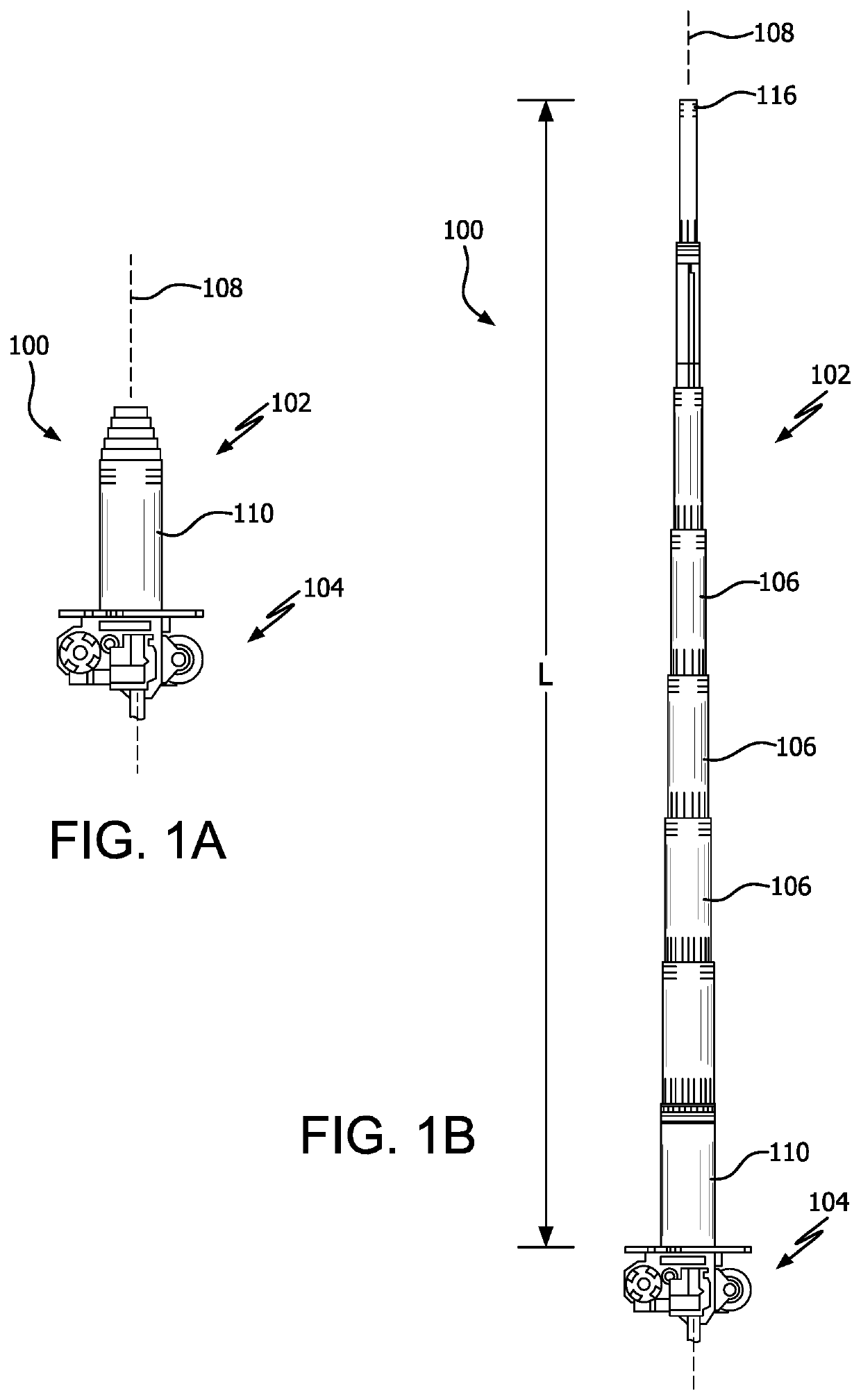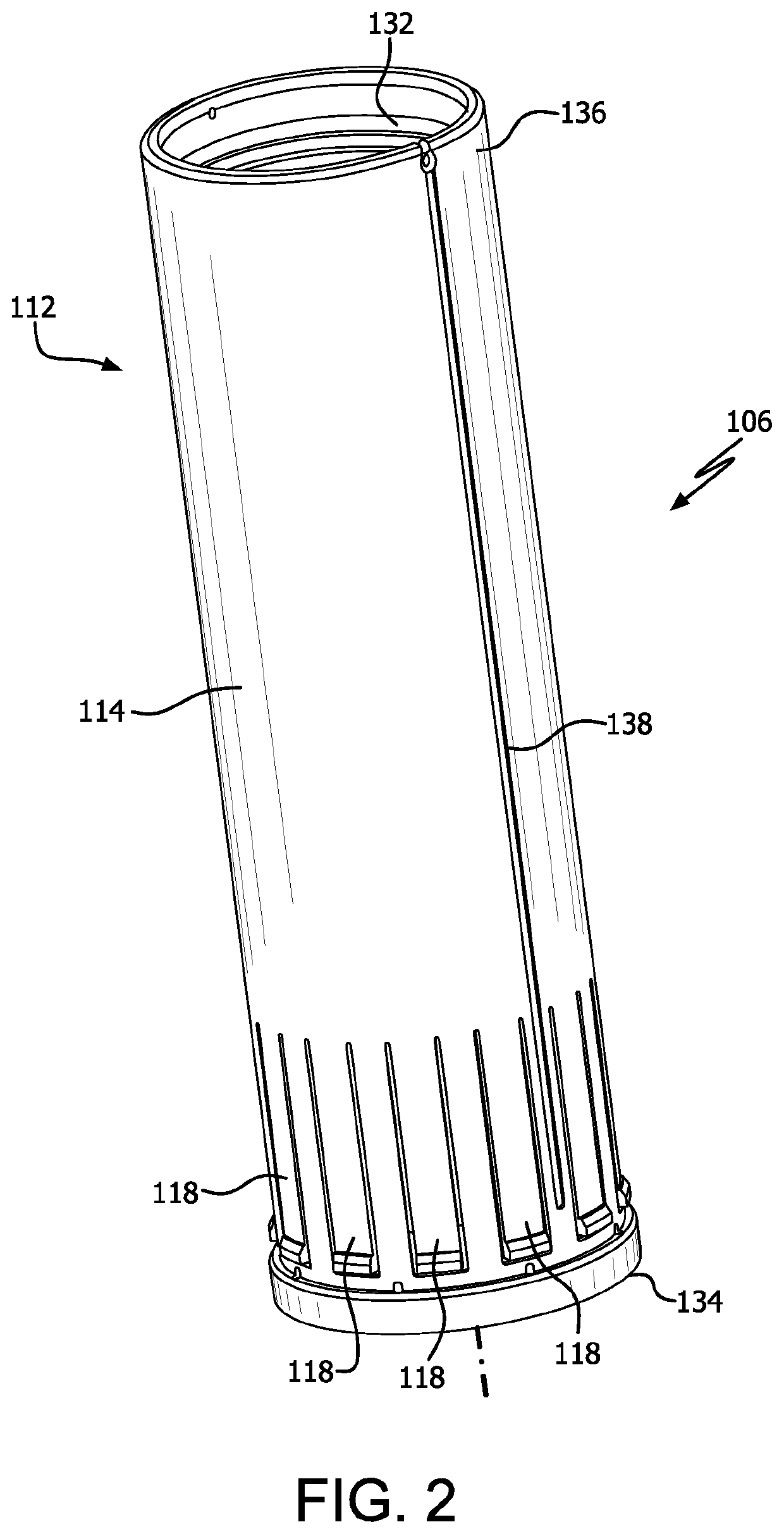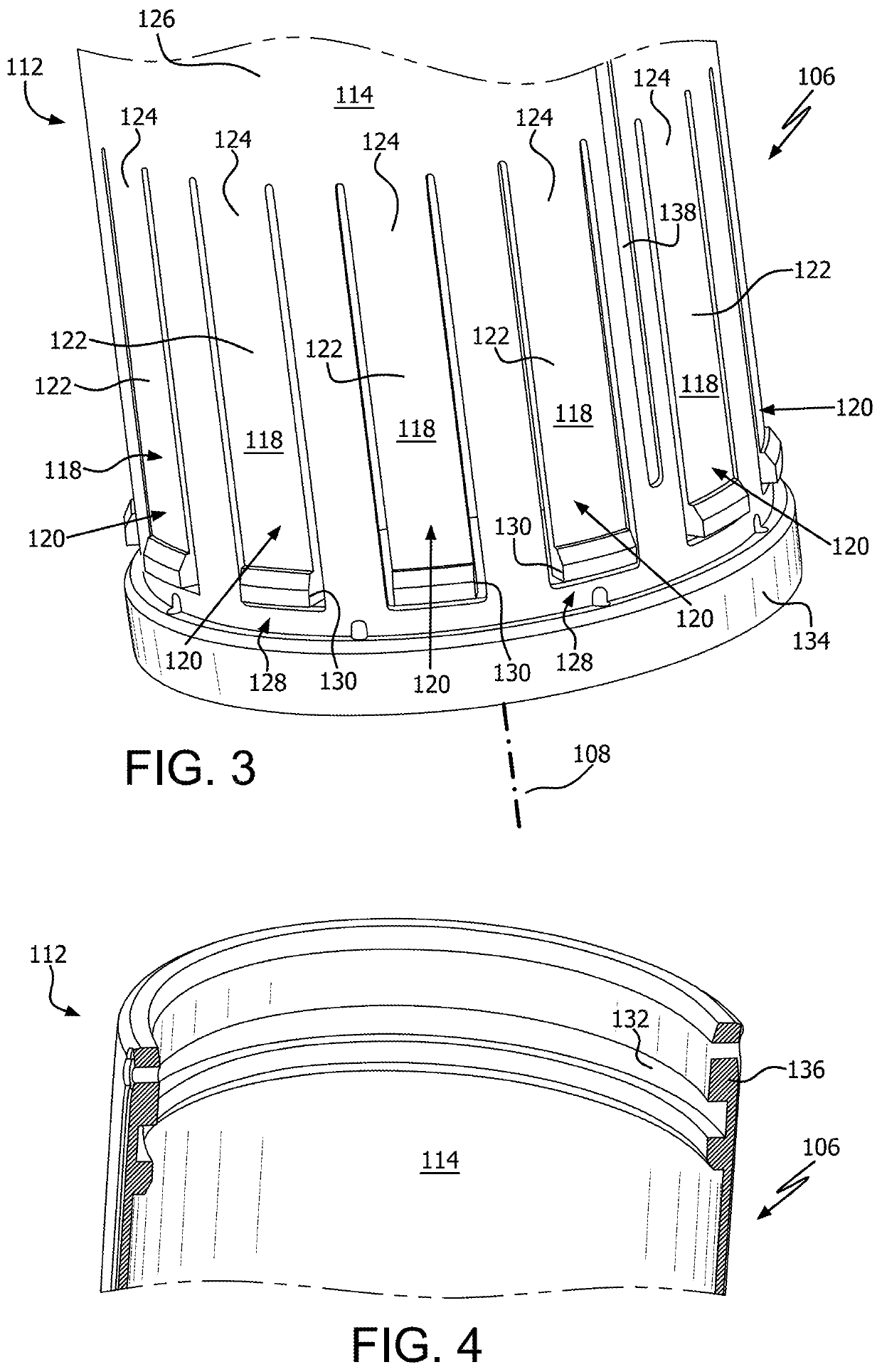Extensible telescoping mast assembly and deployment mechanism
a telescoping mast and assembly technology, applied in the direction of collapsible antenna means, machine supports, rod connections, etc., can solve the problems of limited dimensional stability and deployed stiffness of the mast, particularly problematic limits on deployed stiffness, and limitations on dimensional stability. achieve the effect of facilitating the latch and facilitating the mast transition
- Summary
- Abstract
- Description
- Claims
- Application Information
AI Technical Summary
Benefits of technology
Problems solved by technology
Method used
Image
Examples
Embodiment Construction
[0025]It will be readily understood that the solution described herein and illustrated in the appended figures could involve a wide variety of different configurations. Thus, the following more detailed description, as represented in the figures, is not intended to limit the scope of the present disclosure, but is merely representative of certain implementations in various different scenarios. While the various aspects are presented in the drawings, the drawings are not necessarily drawn to scale unless specifically indicated.
[0026]Extendable masts are needed for a variety of applications, including deployable antenna systems for use on spacecraft. In some scenarios, the extendable masts can serve as booms for supporting antennas and / or various other equipment relating to a particular spacecraft mission. In other scenarios, deployable masts can comprise a part of a deployable reflector for directing radio frequency energy into a desired pattern.
[0027]One conventional type of reflect...
PUM
 Login to View More
Login to View More Abstract
Description
Claims
Application Information
 Login to View More
Login to View More - R&D
- Intellectual Property
- Life Sciences
- Materials
- Tech Scout
- Unparalleled Data Quality
- Higher Quality Content
- 60% Fewer Hallucinations
Browse by: Latest US Patents, China's latest patents, Technical Efficacy Thesaurus, Application Domain, Technology Topic, Popular Technical Reports.
© 2025 PatSnap. All rights reserved.Legal|Privacy policy|Modern Slavery Act Transparency Statement|Sitemap|About US| Contact US: help@patsnap.com



